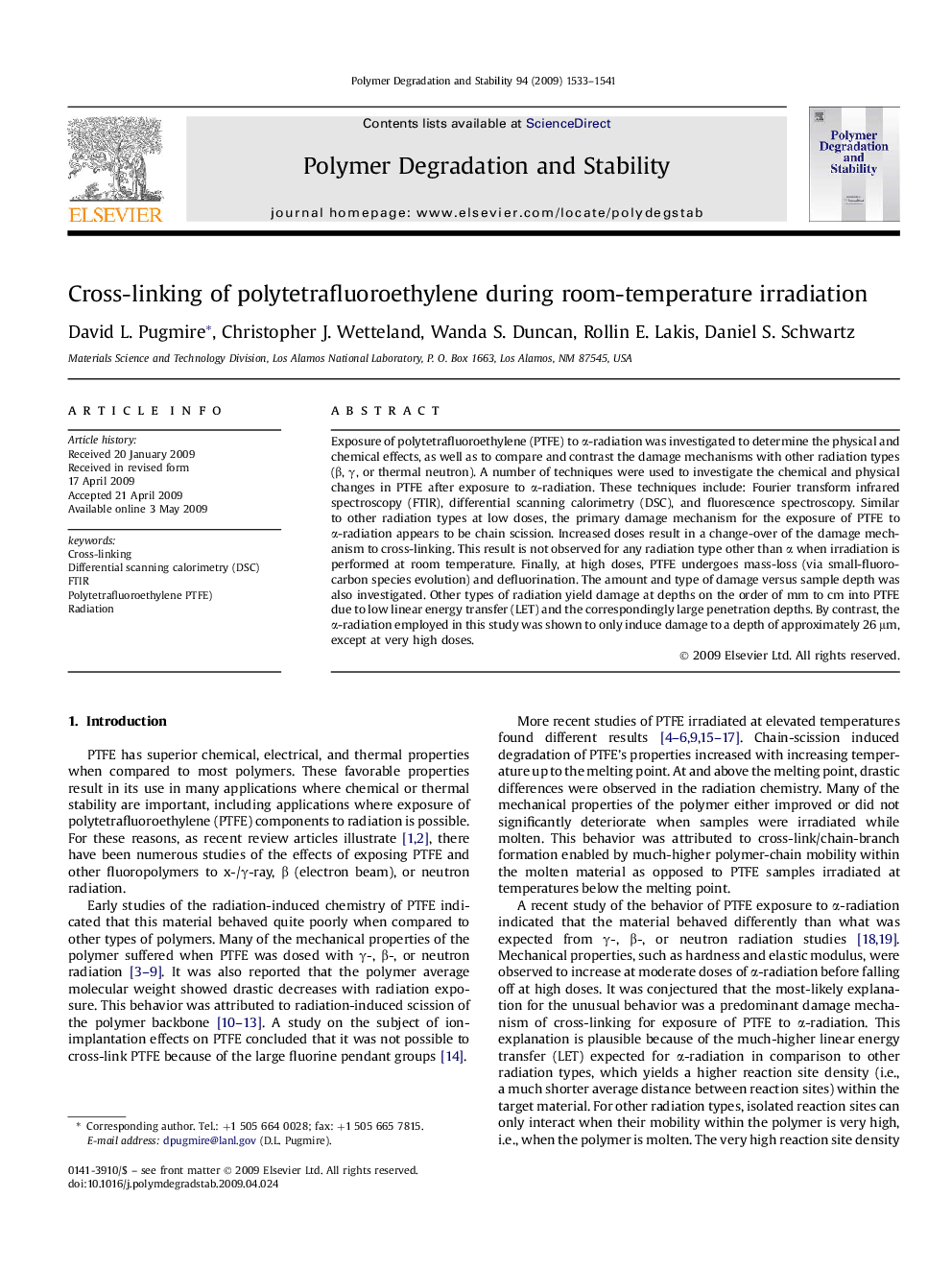| Article ID | Journal | Published Year | Pages | File Type |
|---|---|---|---|---|
| 5203938 | Polymer Degradation and Stability | 2009 | 9 Pages |
Exposure of polytetrafluoroethylene (PTFE) to α-radiation was investigated to determine the physical and chemical effects, as well as to compare and contrast the damage mechanisms with other radiation types (β, γ, or thermal neutron). A number of techniques were used to investigate the chemical and physical changes in PTFE after exposure to α-radiation. These techniques include: Fourier transform infrared spectroscopy (FTIR), differential scanning calorimetry (DSC), and fluorescence spectroscopy. Similar to other radiation types at low doses, the primary damage mechanism for the exposure of PTFE to α-radiation appears to be chain scission. Increased doses result in a change-over of the damage mechanism to cross-linking. This result is not observed for any radiation type other than α when irradiation is performed at room temperature. Finally, at high doses, PTFE undergoes mass-loss (via small-fluorocarbon species evolution) and defluorination. The amount and type of damage versus sample depth was also investigated. Other types of radiation yield damage at depths on the order of mm to cm into PTFE due to low linear energy transfer (LET) and the correspondingly large penetration depths. By contrast, the α-radiation employed in this study was shown to only induce damage to a depth of approximately 26 μm, except at very high doses.
